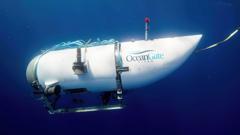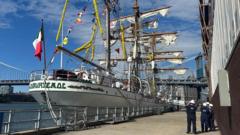OceanGate's Titan submersible imploded on its journey to the wreck of the Titanic because of poor engineering and multiple failures to test the vessel, according to an official report.
Titan imploded in June 2023, killing all five passengers on board including OceanGate's chief executive.
The US National Transportation Safety Board (NTSB) found the engineering process behind the vehicle was inadequate, resulting in faults that meant it failed to meet strength and durability requirements.
The NTSB stated that because the firm did not adequately test Titan, it did not know its actual strength or that it had sustained damaging issues that should have compelled it to be taken out of service prior to its final voyage.
Titan disappeared in the North Atlantic while attempting to dive to the Titanic wreck, located approximately 372 miles from St. John's in Newfoundland and Labrador.
In a previous report released by the US Coast Guard in August, it indicated that the incident was preventable and pointed to critically flawed safety practices by OceanGate.
The Titan submersible was designed to be 6.7m (22ft) long, primarily made with a carbon fibre passenger compartment reinforced with titanium for its domes and several other parts.
During its investigation, the NTSB unearthed significant safety culture issues at OceanGate, with testimonies from employees revealing a dangerous environment where design safety concerns were often ignored.
Additionally, it was noted that the company's business model, which considered paying clients as mission specialists rather than passengers, was problematic under US regulations. A technician recounted a discussion with CEO Stockton Rush, who allegedly expressed intentions to sidestep regulatory challenges.
Following the incident, OceanGate has ceased its operations, and the NTSB has recommended that the US Coast Guard conduct reviews and updates of regulations regarding passenger-carrying pressure vessels.





















